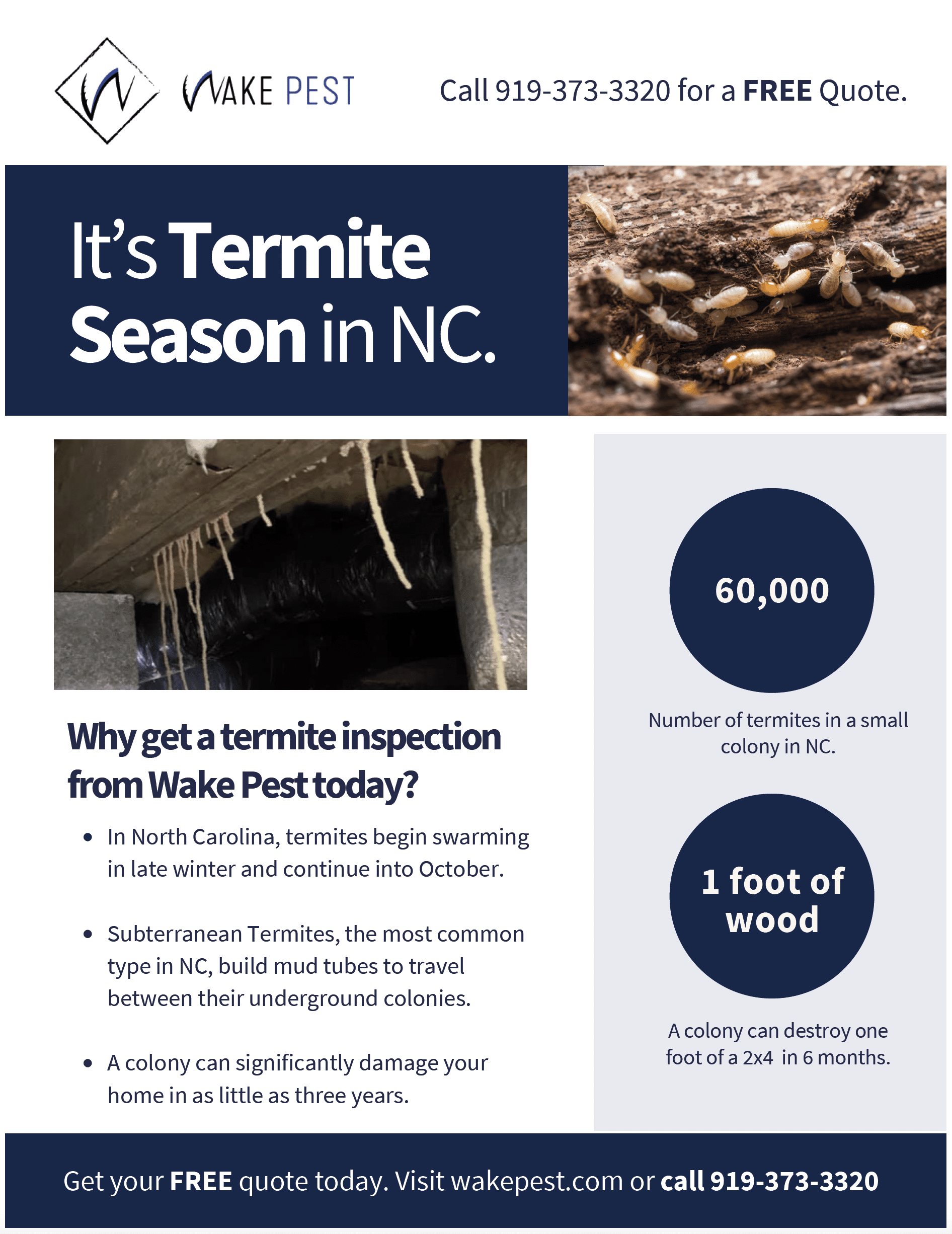Termites are often called the “silent destroyers” because they can chew through wood, flooring, and even wallpaper undetected. Each year, termites cause more than $5 billion in property damage in the United States alone—costs not typically covered by homeowners’ insurance policies. Preventing these pests from invading and damaging your home is crucial, yet many homeowners fall prey to common prevention mistakes, either through misinformation or oversight.
The importance of termite prevention cannot be overstated. Effective prevention saves money in the long run and helps maintain your home’s structural integrity and value. Despite this, a surprising number of homeowners often need to pay more attention to the necessary steps to safeguard their properties against termites because they are unaware of the risks or the correct preventative measures.
Mistake #1: Ignoring Regular Inspections
Regular inspections by professional termite control experts are essential in preventing termite infestations. Yet, many homeowners either delay these inspections or skip them altogether, often due to a misconception about cost or necessity. This neglect can be costly. Termite infestations can go unnoticed for years, causing extensive damage that requires costly repairs once finally detected. Studies have shown that the average homeowner who encounters termite problems pays upwards of $3,000 in repairs, which could be significantly reduced with early detection.
Professional inspectors are trained to spot early signs of termite activity, which can be invisible to the untrained eye. These experts look for subtle hints such as mud tubes, damaged wood, and other indicators that termites are present or may soon invade. Regular inspections can also help identify conditions around your home that attract termites in the future, allowing you to address these issues proactively.
Furthermore, termite control professionals utilize tools and techniques that are far more effective and thorough than what is available to the average homeowner. They can assess the entirety of a structure, often identifying potential problems that could go unnoticed until they become severe.
By not conducting regular inspections, homeowners not only miss the opportunity to catch termites early but also risk allowing minor issues to become significant, costly damage. Homeowners should schedule annual inspections to keep their homes safe and maintain structural integrity. This preventive measure is a small investment compared to the potentially high costs of repairing termite damage.
Mistake #2: Poor Moisture Control
One of the primary attractants for termites is moisture. Homes with poor moisture control provide the perfect environment for termites to thrive. Homeowners must manage and mitigate moisture in and around their property, which is often overlooked, leading to preventable termite infestations.
Excessive moisture can come from various sources. Leaky pipes, improper drainage, and everyday activities such as cooking and showering can increase indoor humidity. External factors like improper landscape grading, which directs water toward the foundation, can also contribute to unwanted moisture accumulation.
Research indicates that termites are significantly more likely to infest homes with high moisture levels. A study found that homes with poor drainage and high humidity are up to 70% more likely to attract termites. This is because termites need moisture to survive and prefer to colonize in damp environments, making wood softer and easier to digest.
Homeowners can take several steps to improve moisture control:
- Regularly check and repair any plumbing leaks.
- Ensure that gutters and downspouts are clean, directing water away from the home’s foundation.
- Use dehumidifiers in damp house areas, such as basements and crawl spaces.
- Ensure proper ventilation in high-moisture areas like bathrooms and kitchens.
Maintaining a dry environment is one of the most effective ways to deter termite activity. By addressing moisture issues, homeowners can significantly reduce the risk of termite infestation, protecting their property from the severe damage these pests can cause.
Mistake #3: Using DIY Termite Treatment Methods
Many homeowners turn to do-it-yourself termite treatments to save money. However, this approach often needs to be revised and can even exacerbate the problem. The allure of over-the-counter solutions is understandable, but these products generally lack the potency and precision of professional-grade treatments, leading to subpar results and ongoing infestations.
The risks associated with DIY termite treatments are not limited to mere ineffectiveness. Many homeowners need to be trained in the proper application techniques, which can result in incomplete coverage, misuse of chemicals, and potential harm to the environment and human health. According to industry reports, misuse of termite treatment products can lead to a 30% increase in termite activity due to disturbed colonies migrating to new areas of a home.
Moreover, DIY solutions often address only the symptoms of a termite problem—the visible termites—without tackling the underlying infestation. This can give homeowners a false sense of security, believing they have resolved the issue when, in reality, the main colony continues to thrive unseen. Such treatments may also fail to prevent future infestations, lacking the residual effects that professional applications provide.
On the other hand, professional pest control services utilize advanced techniques and materials unavailable to the general public. These include baits, barriers, and treatments designed to target and eliminate entire termite colonies. Furthermore, professionals can create customized treatment plans based on each property’s specific needs and vulnerabilities, ensuring comprehensive protection.
Opting for professional termite control services enhances effectiveness and ensures safety and peace of mind. By entrusting termite management to the experts, homeowners can avoid the pitfalls of DIY methods and secure their property against these destructive pests with greater assurance.
Mistake #4: Inadequate Landscaping Practices
Landscaping choices can significantly impact termite risk. Unfortunately, many homeowners inadvertently create ideal termite conditions through common landscaping practices. Issues such as improper placement of mulch, plants, and trees too close to the structure and excessive use of wood elements can all attract termites to a property.
One critical aspect often overlooked is the use of mulch near the home’s foundation. While mulch is great for plants, it retains moisture and can be an inviting environment for termites. Studies have shown that properties with wood mulch placed directly against the home’s foundation are more likely to attract termites. For instance, a major university extension program study revealed that termites are twice as likely found in homes with wood mulch against the foundation than those with mulch placed further away.
Furthermore, planting trees and shrubs too close to the house causes physical damage over time as roots grow and provides termites a bridge to the structure. This connectivity allows termites to bypass perimeter treatments that are in place to prevent their entry.
To mitigate these risks, homeowners should consider the following:
- Use less attractive mulch alternatives like rubber or stone near the home’s foundation.
- Ensure any wood mulch is kept at least six inches from the foundation.
- Plant trees and large shrubs at a sufficient distance from the home to prevent root damage and reduce termite access.
- Regularly trim branches that come in close contact with the house or its roof.
Mistake #5: Failing to Address Home Repairs
Neglecting home maintenance and repairs is a significant oversight that can lead to termite infestations. Cracks in the foundation, gaps around windows and doors, and deteriorating roof shingles are just a few examples of structural weaknesses that can invite termites into a home. The moisture from leaking pipes or roofs further exacerbates this problem by creating ideal termite conditions.
Statistics indicate that homes with structural vulnerabilities are at a higher risk of termite invasion. A National Pest Management Association survey revealed that approximately 58% of termite infestations were associated with structural issues that allowed termites easy access. Moreover, moisture problems related to inadequate repairs were identified as a contributing factor in about 25% of the cases.
Homeowners can take proactive steps to prevent such scenarios by:
- Conducting regular inspections of the home’s exterior and interior for signs of damage or wear that could invite pests.
- Sealing cracks and openings around windows, doors, and foundations to eliminate entry points for termites.
- Fixing leaks promptly and ensuring all plumbing and roof systems are well-maintained to prevent moisture accumulation.
Mistake #6: Overlooking Signs of Termite Activity
Many homeowners must be aware of the signs of termite activity or mistakenly ignore them until it’s too late. Recognizing these signs early can be the difference between manageable repairs and extensive, costly damage. Unfortunately, by the time termites are visibly noticeable, there is often already significant infestation.
Common signs of termite activity include mud tubes on exterior walls, discarded wings near doors or windows, and wood that sounds hollow when tapped. Another telltale sign is the appearance of frass (termite droppings), which resembles fine sawdust. Ignoring these indicators can lead to widespread termite damage. For example, a study reported that homes with untreated visible termite activity experienced, on average, three times more structural damage than homes where early signs were acted upon promptly.
To effectively manage termite risks, homeowners should:
- Regularly check their homes for unusual changes in wood structures, paint, or foundation walls.
- Pay attention to unexplained piles of sawdust or mud-like material in or around the home structure.
- Listen for a hollow sound when tapping wood surfaces, which might indicate termite-feeding activity underneath.


